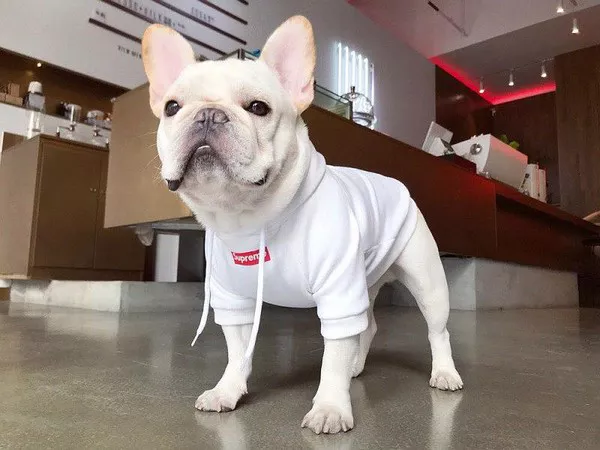Pugs, with their distinctive appearance and charming personalities, often leave owners intrigued by one particular behavior – the mysterious shake. Whether it’s a subtle shiver or a full-body tremor, understanding why a Pug shakes is crucial for responsible pet ownership. In this comprehensive article, we will delve into the various reasons behind this behavior and shed light on the complexities of a Pug’s shivering tendencies.
Innate Traits
The question of why a Pug shakes finds its roots in the breed’s genetic makeup. Pugs belong to a group of toy breeds known for their compact size and distinctive features. The genetic predisposition to shiver or shake can be attributed to their relatively short coats and smaller body mass. With less insulation against temperature changes, Pugs may shake as a natural response to feeling cold or uncomfortable.
Temperature Regulation
Pugs are highly sensitive to temperature fluctuations, and their small size makes them susceptible to feeling the cold more intensely than larger breeds. When exposed to chilly weather or air conditioning, a Pug’s body may respond with shivering as a mechanism to generate warmth. Understanding this aspect of a Pug’s behavior is essential for providing appropriate environmental conditions to keep them comfortable.
Excitement and Anticipation
Pugs are renowned for their exuberant and playful personalities. The sheer joy and excitement they experience in various situations can manifest as a shaking or shivering response. This is particularly noticeable during moments of anticipation, such as when anticipating a walk, playtime, or the arrival of their favorite humans. The exuberance that characterizes these charming canines might just be the cause behind the occasional shake.
Expressive Communication
For Pugs, shaking is not solely a physical response but also a form of expressive communication. Dogs, in general, use body language to convey their emotions, and a Pug’s shake can indicate a range of feelings. From excitement and happiness to nervousness or anxiety, understanding the context of the shake is crucial for interpreting a Pug’s emotional state accurately.
Stress and Anxiety
While excitement can trigger shaking, stress and anxiety can also be culprits behind this behavior. Pugs are sensitive creatures, and changes in their environment, routine, or exposure to unfamiliar situations can induce stress. In such cases, shaking may be a sign of discomfort or nervousness. Identifying stressors and providing a calming environment is essential for a Pug’s well-being.
Health Considerations
Beyond environmental and emotional factors, a Pug’s shake may sometimes be indicative of underlying health issues. Various medical conditions, including pain, discomfort, or neurological problems, can manifest through trembling or shaking. Regular veterinary check-ups are crucial to rule out potential health concerns and ensure a Pug’s overall well-being.
Playful Trembles
Pugs are playful by nature, and during intense play sessions, a Pug’s excitement might escalate to playful trembling. This is often characterized by a rhythmic, joyous shake that is distinct from the shivering seen in response to cold or anxiety. Understanding the nuances of a Pug’s shaking behavior during play enhances the bond between the owner and their furry friend.
Social Shakes
In the canine world, shaking is not only an individualistic behavior but also plays a role in social interactions. Pugs may shake during interactions with other dogs, serving as a non-verbal cue. This social shaking can convey submission, excitement, or playfulness, contributing to the complex language of canine communication.
Training and Positive Reinforcement
If a Pug’s shaking behavior becomes problematic or if it is associated with anxiety, positive reinforcement and training can be effective in modifying the behavior. By creating positive associations with specific situations and using rewards, owners can help their Pugs feel more secure, potentially reducing the frequency of shaking.
Environmental Stressors
Environmental factors play a significant role in a Pug’s well-being. Identifying potential stressors, such as loud noises, unfamiliar people or animals, or changes in routine, can help mitigate the causes of shaking induced by anxiety. Creating a calm and consistent environment contributes to a Pug’s overall happiness.
Age-Related Shaking
As Pugs age, they may experience age-related conditions that contribute to shaking. Arthritis, muscle weakness, or cognitive changes can impact a senior Pug’s physical stability. Recognizing the specific needs of aging Pugs is crucial for providing appropriate care and support.
Conclusion
In conclusion, the reasons behind why a Pug shakes are multifaceted, ranging from genetic predispositions to emotional expressions and environmental influences. Understanding the intricacies of a Pug’s shake fosters a deeper connection between owners and their furry companions. With a blend of attentive care, positive reinforcement, and a keen awareness of a Pug’s unique personality, owners can navigate the delightful mystery of why their Pug shakes, embracing this endearing aspect of canine behavior.


